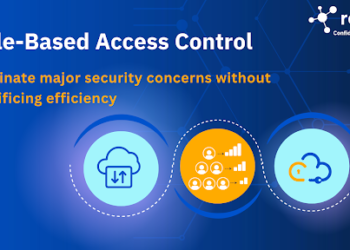In today’s interconnected world, the ability to communicate across borders has become more important than ever. Whether it’s for professional growth, academic opportunities, or personal enrichment, learning a new language opens doors to cultures, perspectives, and possibilities that once felt distant. Traditionally, language learning meant sitting in classrooms, memorizing vocabulary lists, and practicing dialogues with teachers. While this method worked for some, it often lacked flexibility and accessibility. Enter online language learning—a modern solution that has revolutionized how millions of people acquire new languages in the 21st century.
The Rise of Online Language Learning
The shift toward online platforms is not surprising. As technology advances and digital access becomes more widespread, people have realized that education no longer has to be confined to physical classrooms. The pandemic further accelerated this trend, as schools and learners turned to digital solutions out of necessity. What began as a temporary adjustment soon revealed lasting benefits: flexibility, affordability, and personalized learning experiences.
Online language learning platforms have made it possible for anyone with an internet connection to start learning, regardless of their location. A student in rural India can take lessons in French, a business executive in Brazil can brush up on their Mandarin, and a retiree in Canada can learn Spanish for their travels. This democratization of learning has made languages more accessible than ever before.
Accessibility and Flexibility
One of the strongest appeals of online language learning is its flexibility. Learners are no longer bound by rigid schedules. Instead, they can design their own pace, deciding when and where to study. This flexibility makes language learning achievable for individuals balancing busy lifestyles filled with work, family, and other commitments.
Another critical aspect is the accessibility of resources. Online platforms often include multimedia materials such as videos, audio clips, quizzes, and interactive games, which cater to various learning styles. Unlike traditional classes where progress depends on the entire group, online platforms allow learners to revisit lessons, practice at their own pace, and even connect with native speakers across the globe.
A Market on the Rise
The growing popularity of online language learning is not just anecdotal—it is reflected in the market’s rapid expansion. The Online Language Learning Market Size was valued at USD 17.11 Billion in 2024 and is expected to reach USD 46.5 Billion by 2032, growing at a CAGR of 13.3% over the forecast period 2025-2032. This surge highlights the increasing demand for digital learning platforms and the willingness of people to invest in acquiring new linguistic skills.
This growth is fueled by globalization, international business needs, academic mobility, and migration trends. For companies, employees who can communicate in multiple languages represent a valuable asset, enabling smoother negotiations and stronger international partnerships. For individuals, knowing another language not only enriches cultural understanding but also enhances career prospects in a competitive job market.
Beyond Words: Cultural Connection
Learning a new language online is not just about vocabulary and grammar—it’s also about cultural connection. Many platforms integrate cultural lessons into their programs, teaching learners about traditions, idioms, humor, and values embedded within a language. These cultural nuances are crucial because true fluency goes beyond constructing sentences; it’s about understanding context.
For example, when someone learns Japanese, they’re not just memorizing kanji characters but also absorbing cultural norms around politeness and social hierarchy. Similarly, learning Spanish can involve exposure to diverse dialects and regional expressions across Latin America and Spain. Online platforms often bring in native speakers and cultural resources to bridge these gaps, ensuring learners engage with the language holistically.
The Role of Technology in Learning
Technology has amplified the effectiveness of online language learning. Artificial intelligence (AI) and machine learning (ML) have enabled adaptive learning systems that analyze a student’s progress and tailor lessons accordingly. Speech recognition tools provide instant feedback on pronunciation, helping learners refine their accents. Gamification—adding game-like elements such as rewards and challenges—keeps motivation levels high, making the learning process enjoyable and engaging.
Another significant development is the integration of social learning. Many platforms now connect learners with online communities where they can practice conversational skills, share progress, and encourage each other. These communities mimic the natural way people acquire languages—through communication and interaction—while leveraging the convenience of digital space.
Lifelong Learning and Personal Growth
Unlike in the past, language learning today is not restricted to students or professionals. Online platforms have made it possible for people of all ages to engage in lifelong learning. Retirees seeking mental stimulation, travelers preparing for trips, or hobbyists passionate about culture and literature are increasingly embracing online courses. The idea that learning a new language is a lifelong skill rather than just an academic requirement has gained traction, and online platforms have made this pursuit realistic and achievable.
Moreover, mastering a new language often brings personal growth beyond the classroom. It builds confidence, sharpens cognitive abilities, and fosters empathy. Understanding another culture’s way of expressing ideas often reshapes one’s worldview, encouraging open-mindedness and global awareness.
Challenges Ahead
Despite its many advantages, online language learning does come with challenges. Self-motivation is key, as the absence of a physical classroom or teacher supervision can make it easy to lose consistency. Internet connectivity remains a barrier in some regions, limiting access for learners in underserved areas. Additionally, while digital tools are powerful, they may not fully replicate the immersive experience of living in a country where the language is spoken.
However, these challenges are not insurmountable. The growing emphasis on blended approaches—combining online learning with real-world practice—offers promising solutions. As technology continues to evolve, online platforms are likely to become even more interactive, immersive, and effective in addressing these limitations.
Conclusion
The future of online language learning is undeniably bright. With market projections showing continued growth and technology advancing at a rapid pace, more people will embrace digital platforms as their preferred way to acquire new languages. As borders become less defined in the digital age, the ability to communicate across cultures will serve as a bridge, connecting people in ways that transcend geography.
In essence, online language learning is more than an educational trend—it is a cultural movement. It empowers individuals, strengthens businesses, and enriches societies by fostering global understanding. Whether for career advancement, personal enrichment, or cross-cultural communication, the digital classroom is proving to be one of the most powerful tools of the modern era.













